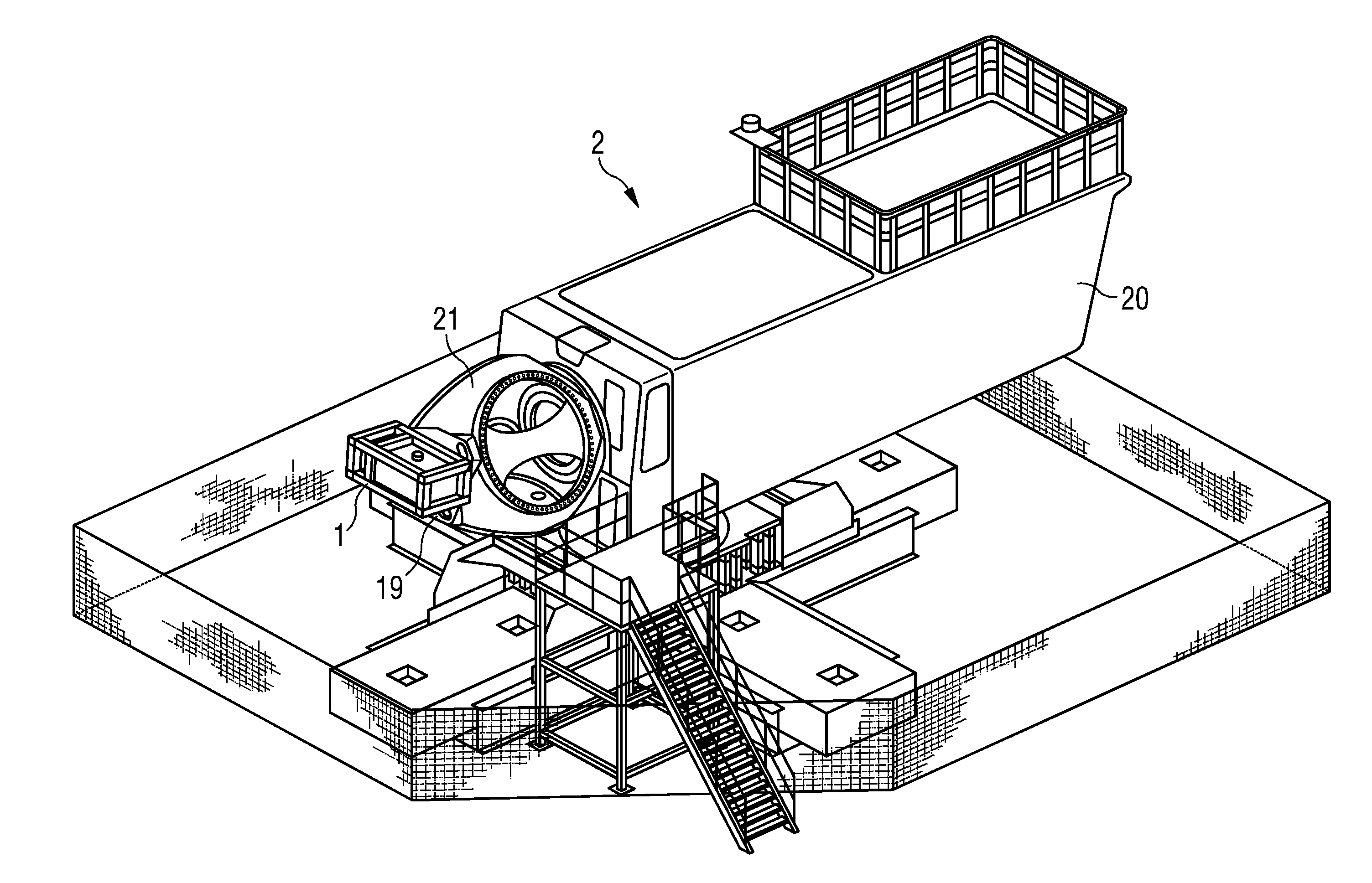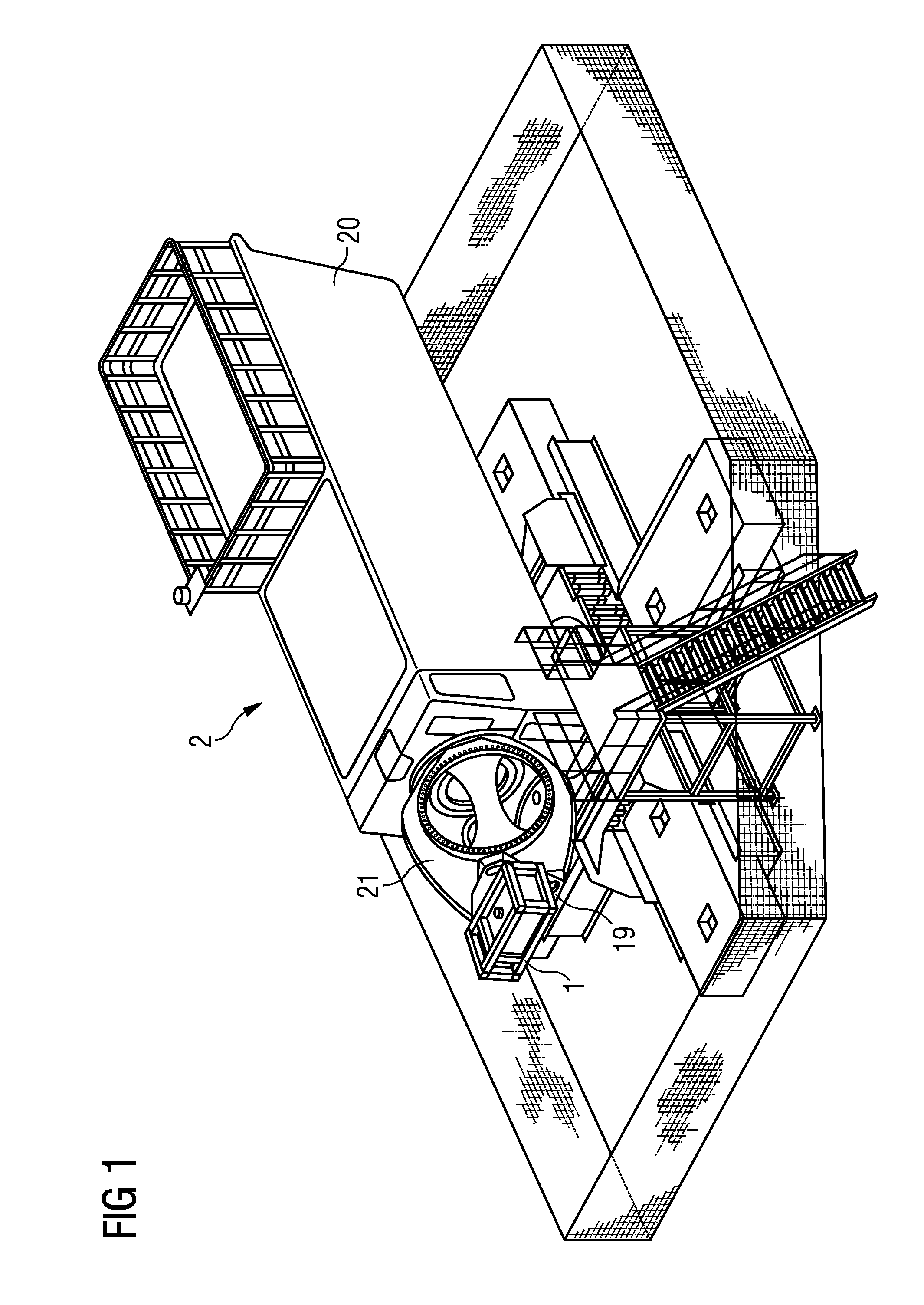Test rig
a test rig and rotor technology, applied in the field of test rigs, can solve the problems of expensive maintenance and repair procedures, and excessive wear and material fatigue of various structural elements
- Summary
- Abstract
- Description
- Claims
- Application Information
AI Technical Summary
Benefits of technology
Problems solved by technology
Method used
Image
Examples
Embodiment Construction
[0043]In the diagrams, like numbers refer to like objects throughout. Objects in the diagrams are not necessarily drawn to scale.
[0044]FIG. 1 shows an embodiment of a wind turbine test setup 2 according to the invention. The component under test comprises a nacelle 20 and hub 21 of a wind turbine. The same type of model can be used as would be used in real-life, and the nacelle 20 can be mounted on a tower model (for example a short-spring arrangement) that imitates the behaviour of an appropriate tower construction. To imitate the effects of the rotor blade rotation and wind loading, a test rig 1 according to the invention is mounted securely to the hub 21 by means of an adapter 19 or connecting means 19 so that centrifugal forces generated in the test rig are transferred essentially undiminished as lateral forces F to the hub 21 and nacelle 20.
[0045]FIG. 2 shows a partial cut-away of an embodiment of a test rig 1 according to the invention. The test rig 1 comprises a cage 18 or fr...
PUM
 Login to View More
Login to View More Abstract
Description
Claims
Application Information
 Login to View More
Login to View More - R&D
- Intellectual Property
- Life Sciences
- Materials
- Tech Scout
- Unparalleled Data Quality
- Higher Quality Content
- 60% Fewer Hallucinations
Browse by: Latest US Patents, China's latest patents, Technical Efficacy Thesaurus, Application Domain, Technology Topic, Popular Technical Reports.
© 2025 PatSnap. All rights reserved.Legal|Privacy policy|Modern Slavery Act Transparency Statement|Sitemap|About US| Contact US: help@patsnap.com



